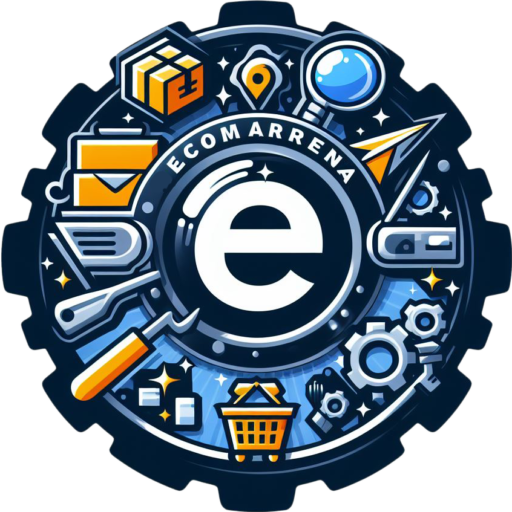If you are looking for a powerful, flexible, and scalable e-commerce platform to manage your inventory and orders across multiple sales channels, you might have heard of Linnworks. Linnworks is one of the most popular and widely used e-commerce platforms in the world, with over 4,000 customers and a 2.32% market share But what exactly is Linnworks and how does it work?
What is Linnworks?
Linnworks is an online software that connects, manages, and automates your e-commerce operations, from inventory and warehouse management to order fulfillment and reporting. Linnworks was launched in 2009 by Fedor Dzjuba and Artem Veremeenko, two UK-based entrepreneurs who wanted to create a simple and affordable solution for online retailers. Linnworks is written in C# and uses Microsoft SQL Server as its database. Linnworks also uses various other technologies, such as ASP.NET, Angular, and AWS, to provide its core functionality and features
Linnworks offers two main plans for different types of businesses and needs: Linnworks Standard and Linnworks Pro. Linnworks Standard is a basic plan that allows you to manage up to 10,000 SKUs and 150 orders per day, and access various features and tools, such as inventory management, order management, shipping management, and more. Linnworks Pro is an advanced plan that allows you to manage unlimited SKUs and orders, and access more features and tools, such as warehouse management, automation rules, analytics and forecasting, and more.
Linnworks also provides various integrations and extensions that enhance the functionality and compatibility of the platform, such as:
- Sales Channels: Linnworks integrates with over 100 global marketplaces and e-commerce platforms, such as Amazon, eBay, Shopify, WooCommerce, and more. You can manage all your sales channels from a single dashboard, and sync your inventory, orders, and listings across them.
- Shipping Providers: Linnworks integrates with over 50 shipping providers and couriers, such as Royal Mail, DHL, FedEx, and more. You can print shipping labels, track shipments, and provide delivery confirmation to your customers.
- Accounting Software: Linnworks integrates with various accounting software and tools, such as Xero, QuickBooks, Sage, and more. You can export your sales data, invoices, and transactions to your accounting software, and keep track of your finances and taxes.
- Other Services: Linnworks integrates with various other services and tools that can help you with your e-commerce operations, such as barcode scanners, label printers, payment gateways, CRM systems, and more.
How does Linnworks work?
To start using Linnworks, you need to create an account and choose your Linnworks plan. You can sign up for a 14-day free trial to test the platform and its features. Once you have an account, you can access the Linnworks dashboard, where you can set up and manage your e-commerce operations.
To set up your e-commerce operations on Linnworks, you need to perform the following steps:
- Add your sales channels: You can add your sales channels to Linnworks by using the channel integration wizard, which will guide you through the process of connecting your accounts and authorizing Linnworks to access your data. You can also configure various settings and options for each sales channel, such as inventory sync, order sync, listing sync, and more.
- Add your shipping providers: You can add your shipping providers to Linnworks by using the shipping integration wizard, which will guide you through the process of connecting your accounts and authorizing Linnworks to access your data. You can also configure various settings and options for each shipping provider, such as shipping services, shipping labels, tracking numbers, and more.
- Add your products: You can add your products to Linnworks by using the product import wizard, which will allow you to import your product data from various sources, such as CSV files, Excel files, or your sales channels. You can also add your products manually or use the product creation wizard, which will help you create new products and assign them various attributes, such as title, description, price, stock level, and more.
- Add your locations: You can add your locations to Linnworks by using the location manager, which will allow you to create and manage your warehouses, stores, or 3PLs. You can also assign your products and orders to different locations, and track your inventory and fulfillment across them.
To manage your e-commerce operations on Linnworks, you need to use the Linnworks dashboard, which provides various features and tools, such as:
- Inventory Management: This is where you can view, edit, and update your products and their attributes, and manage your inventory levels and movements across your locations and sales channels. You can also use various features and tools, such as stock control, stock transfer, stock valuation, and more.
- Order Management: This is where you can view, process, and fulfill your orders from all your sales channels, and manage your invoices, shipments, and returns. You can also use various features and tools, such as order routing, order splitting, order merging, and more.
- Shipping Management: This is where you can print shipping labels, track shipments, and provide delivery confirmation to your customers. You can also use various features and tools, such as shipping rules, shipping quotes, shipping presets, and more.
- Warehouse Management: This is where you can manage your warehouse operations, such as picking, packing, and shipping your orders. You can also use various features and tools, such as barcode scanning, batch processing, wave picking, and more.
- Listing Management: This is where you can create and manage your listings on your sales channels, and sync your product data and inventory across them. You can also use various features and tools, such as listing templates, listing rules, listing presets, and more.
- Automation Management: This is where you can create and manage your automation rules, which are sets of conditions and actions that can automate various tasks and processes, such as order routing, shipping allocation, stock adjustment, and more.
- Analytics and Reporting: This is where you can access and analyze your e-commerce data, such as sales, products, customers, inventory, and more. You can also use various features and tools, such as dashboards, charts, graphs, and more.
Conclusion
Linnworks is a great platform to manage your e-commerce operations, whether you sell on one or multiple sales channels, and whether you fulfill from one or multiple locations. Linnworks provides a simple, powerful, and scalable solution that allows you to connect, manage, and automate your e-commerce operations, and save time and money.

